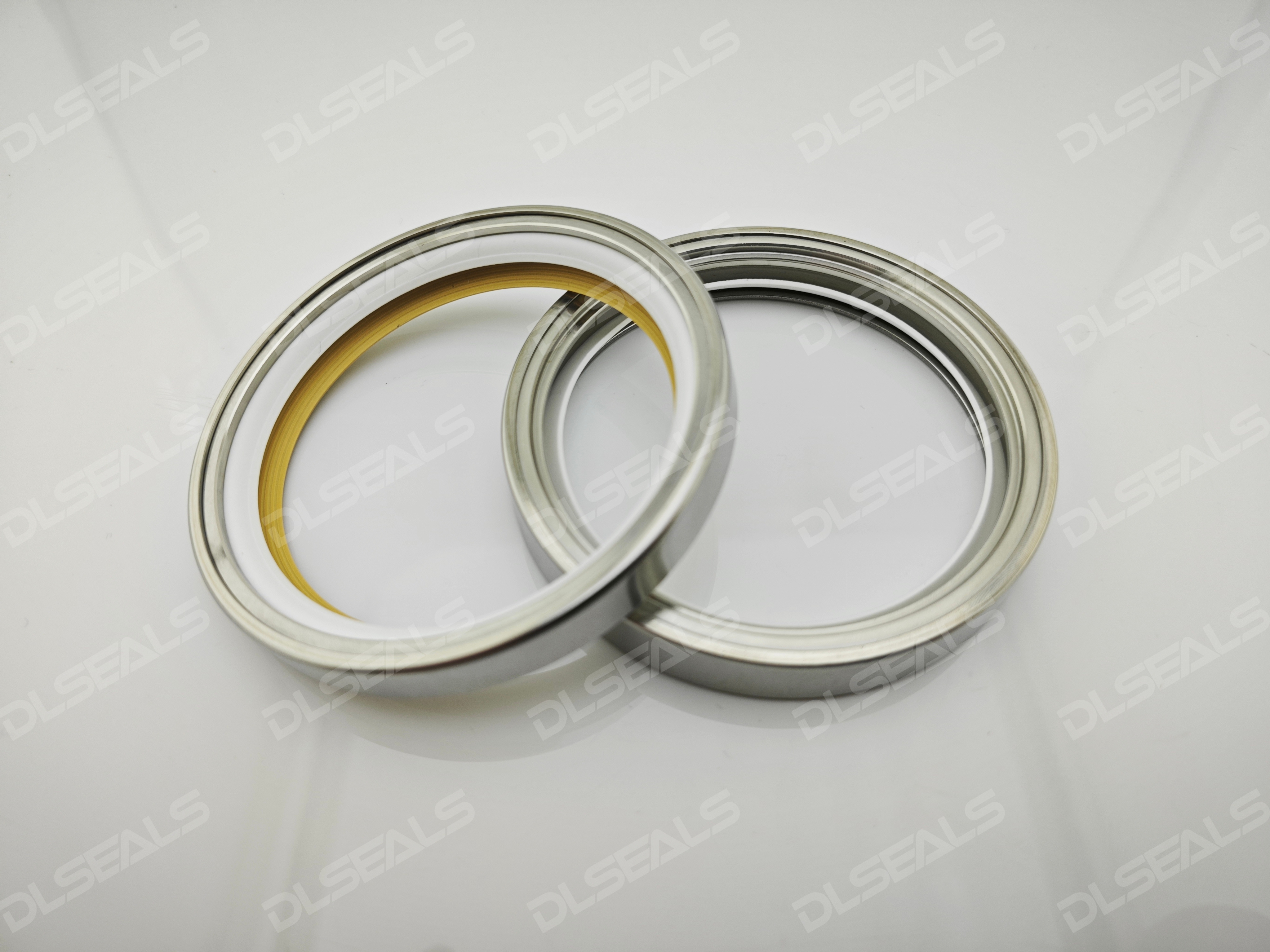News
A2025-11-06

In industrial equipment and mechanical transmission systems, oil seals are critical components that prevent lubricant leakage and the ingress of external contaminants. When the outer shell of an oil seal is made of stainless steel (such as SUS304 or SUS316), it offers excellent corrosion resistance, making it suitable for harsh environments like food processing, chemical, and marine applications. When selecting a stainless steel oil seal, you will often encounter the choice between "Single Lip", "Double Lip", and "Triple Lip" designs. This article will explain the core differences between them to help you make the right choice.
Before diving in, it's essential to understand the function of each lip:
Primary Lip (Sealing Lip): The most important part of the seal, usually facing the inside of the equipment. Its core task is to prevent the internal lubricant (oil or grease) from leaking out. The primary lip often has a garter spring on its inner edge to maintain constant pressure against the shaft, ensuring long-term effectiveness.
Secondary Lip (Auxiliary Lip / Dust Lip): Located on the outer side of the primary lip, facing the environment. Its core task is to block external contaminants like dust, dirt, and moisture from entering the equipment. The dust lip typically does not have a spring and exerts less pressure on the shaft.
Simply put, an increase in the number of lips represents a higher level of protection and enhanced functionality.
Structure: Has only 1 lip—the primary sealing lip.
Function: Unidirectional sealing, leak prevention only. It effectively retains lubricant inside the equipment but offers no protection against dust.
Advantages:
Simple structure, low friction, minimal shaft wear, low operating temperature.
Lowest cost, highly economical.
Disadvantages:
Unsuitable for any environment with contaminants. Ingress of external particles will rapidly accelerate wear on the primary lip and shaft, leading to premature failure.
Application Scenarios:
Clean, enclosed indoor environments (e.g., inside some gearboxes, electric motors).
Applications where only splash prevention is needed, with no risk of external contamination.
Summary: Best for clean environments where the concern is "keeping lubricant in," not "keeping contaminants out."
Structure: Has 2 lips. The inner lip is the spring-loaded primary sealing lip. The outer lip is the unspring dust lip. A cavity is formed between the two lips.
Function: Bidirectional sealing, preventing both leaks and contamination. This is the most widely used type in industry.
Advantages:
Comprehensive functionality, providing excellent all-around protection.
The cavity between the lips can be packed with grease, which lubricates the primary lip and enhances contaminant exclusion.
Disadvantages:
Higher friction and operating temperature than single-lip seals.
Application Scenarios:
Most open or semi-open environments.
Construction Machinery: Track rollers, idlers, and undercarriages of excavators and loaders.
Automotive Industry: Wheel hub bearings.
Agricultural machinery, industrial pumps, fans, etc.
Summary: The standard, general-purpose choice for dusty, damp, or wet environments.
Structure: Has 3 lips, with a more complex design. A common configuration is: outer primary dust lip + middle primary sealing lip + inner auxiliary lip. The inner auxiliary lip can act as a secondary dust barrier or be used to isolate different media.
Function: Enhanced/multi-stage bidirectional sealing. It adds a third line of defense to the double-lip design, offering the highest level of protection.
Advantages:
Extremely high sealing reliability for the most severe conditions.
Can be designed for specific needs like media isolation, handling low pressure, or high-speed applications.
Disadvantages:
Most complex structure, highest cost.
Highest friction; requires superior shaft finish, precision, and careful installation.
Application Scenarios:
Extreme environments: Mining, cement, metallurgy with highly abrasive dust.
Special applications: Equipment with slight pressure or requiring separation of two different lubricants.
High-standard industries: Areas in food and pharmaceutical machinery where grease must not contaminate the product.
Summary: Designed for "extremely harsh" conditions or applications with "special requirements."
|
Characteristic |
Single Lip Seal |
Double Lip Seal |
Triple Lip Seal |
|---|---|---|---|
|
Core Function |
Unidirectional - Leak Prevention |
Bidirectional - Leak & Contaminant Prevention |
Multi-stage / Special Function |
|
Number of Lips |
1 |
2 |
3 |
|
Friction & Heat |
Lowest |
Medium |
Highest |
|
Cost |
Lowest |
Medium |
Highest |
|
Suitable Environment |
Clean, Uncontaminated |
Dusty, Damp, General Purpose |
Extreme, Pressurized, Media Isolation |
|
Selection Advice |
Economical Choice |
Universal Choice |
Premium Reliability Choice |
Selection Process Guide:
Assess the Environment: What is the operating environment of my equipment? Clean, dusty, or extreme?
Define Core Needs: Is the goal only to prevent oil leakage, or is contaminant exclusion also critical?
Consider Special Requirements: Are there factors like pressure, high speed, or media separation?
Balance Cost & Performance: Choose the most economical solution that reliably meets the requirements.
Regardless of the number of lips, two final points are crucial:
Lip Material: The stainless steel shell provides a corrosion-resistant casing, but the elastomer material of the lip that contacts the media is equally critical. Common materials include Nitrile Rubber (NBR, for oil), Fluoroelastomer (FKM, for high temp/chemicals), and Polyacrylate Rubber (ACM, for hot oil). Selection must match the operating media and temperature.
Correct Installation: Even the best seal will fail if installed incorrectly (e.g., lip damage, misalignment, spring dislodgement). Always use proper tools and ensure the shaft and housing are clean and undamaged.
We hope this article clarifies the mystery behind the "lips" on stainless steel oil seals and helps you select the most suitable "guardian" for your equipment.
[DLSEALS kindly Reminder] Sealing issues? Turn to DLSEALS! As a sealing component manufacturer, we specialize in customizing sealing components, providing a full range of services from design, research and development, production, testing, and more. If you have more information you'd like to know, feel free to contact us directly. DLSEALS's product experts are dedicated to serving you!